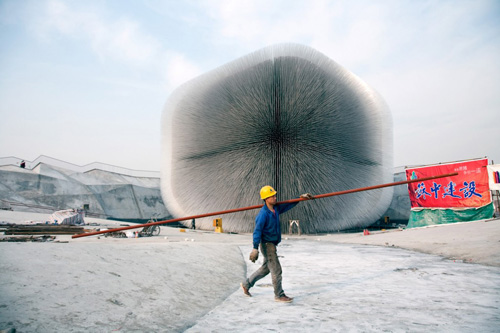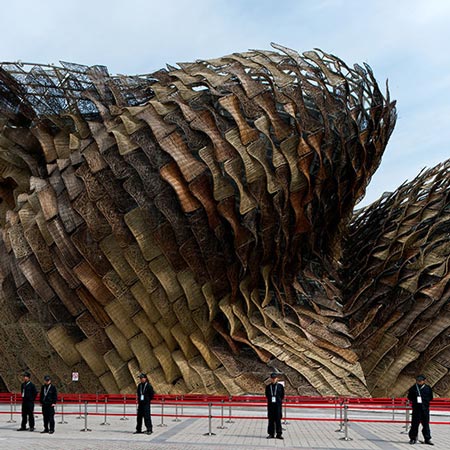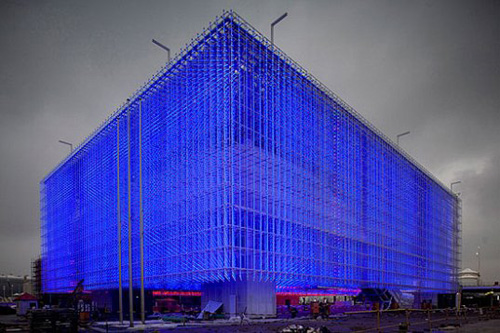Like past expos and world’s fairs, the 2010 Shanghai Expo, open now, has served as a spark for architectural experimentation on a global scale. Some of these experiments are breathtaking. The UK’s pavilion, “The Seed Cathedral” by Thomas Heatherwick, is the standout.

Six stories high, the cube-like structure comprises approximately 60,000 7.5m long slim transparent acrylic rods that flex in the breeze. Each rod contains a set of seeds at the interior end.

From the exterior the pavilion defies the traditional sense of enclosure—its limits shifting in the light, its surface indeterminate.


From the interior...I will let the pictures speak for themselves. Check this video of the space (just suspend judgements on the captioning):

Not all of the design at the Expo reaches the same heights, but most of the pavilions are, at the least, ambitious.

For Spain's Pavilion wicker goes modern by Miralles Tagliabue EMBT.

For the Dutch, not a Pavilion but a street. "Happy Street" in fact. By John Kormeling.

Denmark Pavilion by BIG & Arup

Shanghai Corporate Pavilion, facade created from recycled CD cases by Atelier Feichang Jianzhu.
Those that succeed create places that stretch our definitions of architecture and space. These temporary structures, built for show and spectacle, give a glimpse of the potential of design, separate from nationalist agendas, to create new worlds and new ways of seeing. Even those that elicit more “huh?” than “wow” move us forward, by their willingness to be daring, to wonder out loud.
For a quick view of the various pavilions, check out ArchDaily's "Round up" Part I and Part II.
And where is the US pavilion you ask? More on that in the next post



